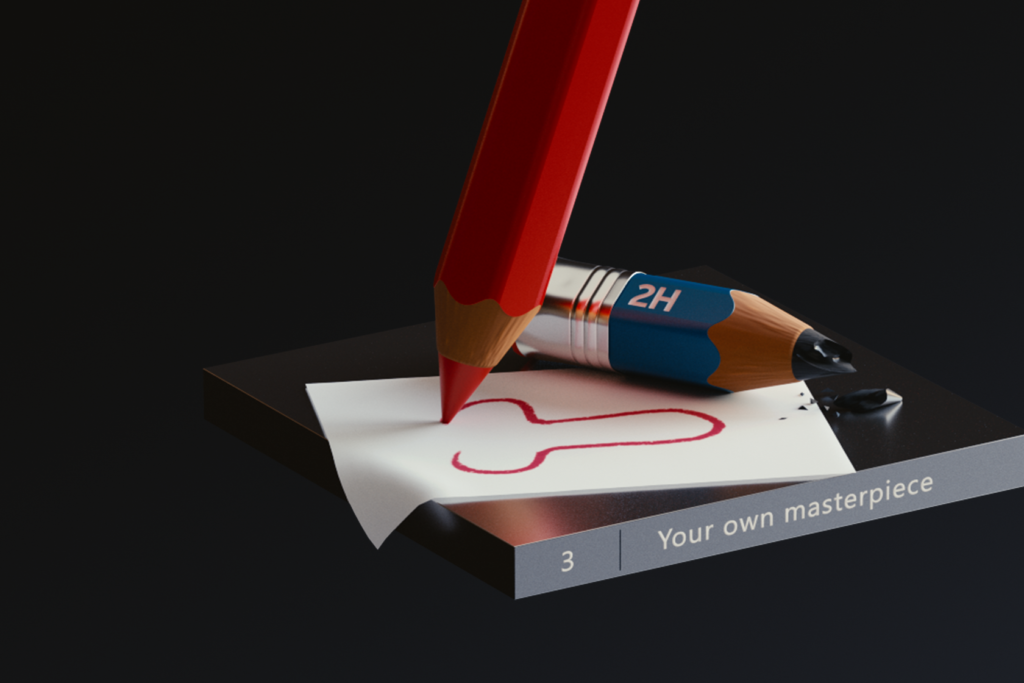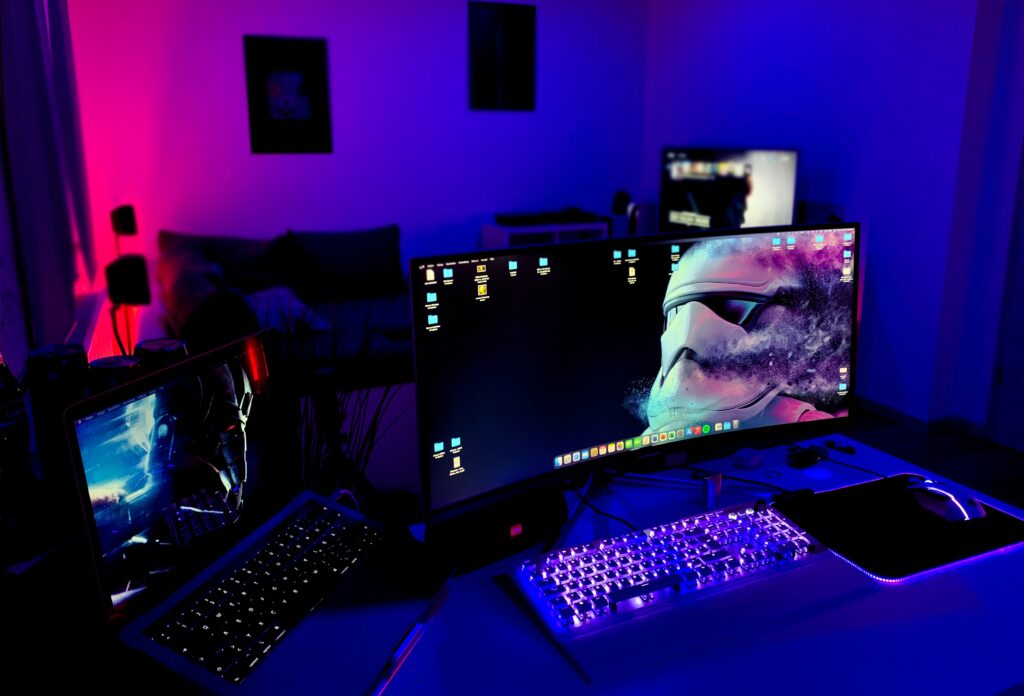Learn the basics of what motion graphics designers do, how to get started in vector animation, and what you can do right now to start building your career and become
a motion designer!
Motion graphics designers, also called motion designers, use motion to bring their creations to life. Whether it’s artwork for the web, television, or films, their use of visual effects and animation keeps users engaged better than ever before.
Thanks to animated graphics and visual effects, motion graphics designers are taking entertainment and commercial experiences to new highs. As video content becomes omnipresent online, the need for motion graphics designers has expanded to include almost anything on any digital platform.
What Does a Motion Graphics Designer do?
It is common for us to associate our profession with our used tools. After Effects has become the most popular tool for motion designers in the industry, as it has all the features you might see in films and commercials.
The most common task you’ll do is UI animation and vector animation (also called shape animation). Normally, clients provide you with ready-made designs, which makes your task easier because you don’t have to be creative or be able to draw. All you have to do is learn how to animate with After Effects.
If you want to become a motion designer in a short period of time, you can start by animating ready-made designs that a client will give you. But in case you don’t have a client, you can find ready-made designs of other artists and animate them. It helps you to sharpen your skills and fill up your portfolio.
There are millions of vacancies in web design companies that seek motion designers.
Their main task is the animation of websites and applications. As a rule, you only need to understand the basics of animation. Fortunately, After Effects will help you achieve this. First, you need to understand the interface of the program, which can be simpler than you’d think. The most important options are the Project File menu, Composition, and Timeline.
In the Project file, you will see all the assets provided to you.
In the Composition, you animate the finished design.
Set the Timings on a timeline, and work with the keys of animation.
After that, the first thing you’ll need to master is the Graph Editor. It is necessary for your animation to be smooth and not clumsy. You can use our ready-made free extension, which will give you a convenient and intuitive interface where you can manage easings by means of handy sliders.
Moving on to Vector Animations
You can master these skills in one week and successfully apply them to real projects in web design studios. As soon as you master the program, you can start vector animation. In motion design, we usually call it Shape Animation.
Vector icons are the natural next step in your progress, since you will start to learn about shape modifiers, and they will certainly help you to create good-looking animations. All it takes is one trim path modifier, and you are able to do Lettering Animation, which is already impressive:
When it comes to vector animation, the output of your animation will often be in video format or GIF. This means that it is no longer a vector and exists as a video format like AVI, MP4, MOV, or GIF. Instead, it is a vector-only inside After Effects.
At the end of the project, the final export of the video file or GIF should be done as required by the client, who will later use it for the intro to the videos.
But what if we need to keep our animation as a vector file when exporting?
Background transparency is another significant point. Imagine that your animation should overlay objects on the website or be slightly transparent. A vector will easily solve these problems. If you have a video file, you will need to export it to a MOV or PNG sequence, and that will probably weigh 5 – 25 MB. But if we make the vector animation with proper optimization, it will weigh only 25 – 50 KB.
Can After Effects Animate Vectors at the Output?
After Effects *can* handle this task thanks to the Bodymovin extension.
As we work on the shape animation, we need to know where the final product will be used in the future. If we need to export the document in a vector animation, we will face some limitations. This is a longer topic, and you can learn more about it here.
The situation is much easier if you need a video file or GIF at the final stage. Here, we can use the built-in effects that allow us to do motion design without any limitations.
Even the name of the program itself gives us a hint that we will be working with effects. The fastest way to see their capabilities is to work with preset AE templates. In that case, the templates will be customized and all you have to do is change the assets inside.
Commonly these are images, icons, texts, and logos. After you change the assets, the program will do everything for you. There are a lot of free AE templates on the web and if you want to learn more about them in practice, we recommend you check them out. Many people earn money exactly in this way, just using templates and selling their services on freelance websites.
Though, if you deal with original art, you need to go deeper into After Effects. You are lucky if your logo is a set of geometric shapes and text, but if the logo looks like a character, then you will have to do animation to its fullest scope.
Going Deeper into Motion Graphics Animation
To build your knowledge, you should first learn the 12 principles of Disney animation.
These principles will help you understand how Disney animates characters, even if it is a simple square. You can learn how to animate a square using animation in this article.
Rigging is the most common preparatory process for character animation in the motion design industry. Character rigging begins with limb adjustment and ends with facial animation. This is a process that allows you to get rid of manual work and perform complex tasks automatically.
If you want to do advanced rigging, you need to know the basics of programming. After Effects has a built-in language, and we call it “Expressions”. This language is similar to JavaScript.
The industry tends to use tools that help avoid such a process, as many artists have no intention to learn how to program, but nevertheless want to take full advantage of expressions. So, we created our own extension. It provides all the possible tasks you will likely have to deal with when mastering After Effects. It includes a set of features ranging from working with animation graphics to automatic walk cycles.
When mastering character animation, you follow these 6 steps:
- Rigging limbs
- Rigging Face
- Fake 3D
- Walk cycle
- Lip sync
- Secondary animations (hair, cloth)
Having professional skills like UI Animation, Logo Animation, and Character Animation in your knowledge, you can call yourself an After Effects Generalist. This means that you are a multi-skilled artist, and such professionals are more valuable than those who are focused on just one thing.
Everything You Need To Start
Your Motion Design Career
These skills will allow you to make full-fledged promotional videos. We have specially developed a generalist course called Motion Beast where you can get acquainted with all the features of After Effects!
What is the Motion Beast course?
This is the must-see course for any Motion Designer. It lays the foundation for all aspects of modern motion design and covers every topic from AE basics to character rigging and frame by frame animation. The course will help you overcome AE-related barriers and fears which are standing between you and the wonderful world of animation and motion design!
The choice is up to you. You can continue to develop in After Effects, learn programming, and do custom rigging. Or you can deepen into character animation and progress in that direction, as Markus Magnusson does. This specialist has a whole course that is focused on character animation – Science of Character Animation. Likewise, if you learn the principles of traditional animation, you might enjoy developing frame-by-frame animation and combining it within After Effects, as Ben Marriot does in his Motion Practice course. You also might be interested in developing your skills in effects and making modern videos like Eduard Mihailov in his Mad VFX and Rich Glitch course.
You can also choose to develop in 3D within After Effects, all possible thanks to the many built-in packages and Cinema 4D, which will be easy to combine with After Effects. We know that if you choose the 3D path, it will open up new horizons, and numerous directions for your growth, namely:
- Modeling
- Rigging
- Animation
- Shading/Lighting/Texturing
- VFX
- Render
Having professional skills like UI Animation, Logo Animation, and Character Animation in your knowledge, you can call yourself an After Effects Generalist. This means that you are a multi-skilled artist, and such professionals are more valuable than those who are focused on just one thing.
Specialists in particular areas are very common in 3D. This can be an animator who cannot do rigging or a modeling artist who cannot render. Variations are numerous, as rendering in the 3D industry is much more complicated than rendering in 2D software and often requires separate skills.
Regardless of the skill you choose, it will serve to expand your motion design career. If you want to become a motion designer, skill acquisition is a good focus to keep in the long-run. You can improve your skills using the courses at Motion Design School, and speed up your progress considerably.
Related Articles:
How to be Successful in Online Classes
When deciding on taking an online course, some of us may be motivated by the pure desire to learn something new, however, let’s be honest here, we mainly choose it to bring our professional skills to a new level and get closer to our dream job. In the motion design world, people are hired for […]
7 Steps to Turn Your Homework into a Huge and Unique Portfolio
You already know, that home tasks and assignments from the lessons of a course have immense potential for creating your portfolio. What’s more, they can be further developed into something bigger, a completely new piece of work that will showcase your skills and your progress. We are talking about scaling up you ideas to series […]
How to Start a Career in Motion Design?
If you’re going to get involved with motion design, it’s good to have an idea of how much you’re going to make. Learn the average motion designer salary, as well as options for freelancer motion designers, and you’re going to be pleasantly surprised.
What’s your favorite SM channel? Because we cover them all.
Join in based on what interests you:
Twitter is where we talk crypto, NFTs, Metaverse and latest MDS developments in this space.
Is our creative hub and will serve you as a source of inspiration!


